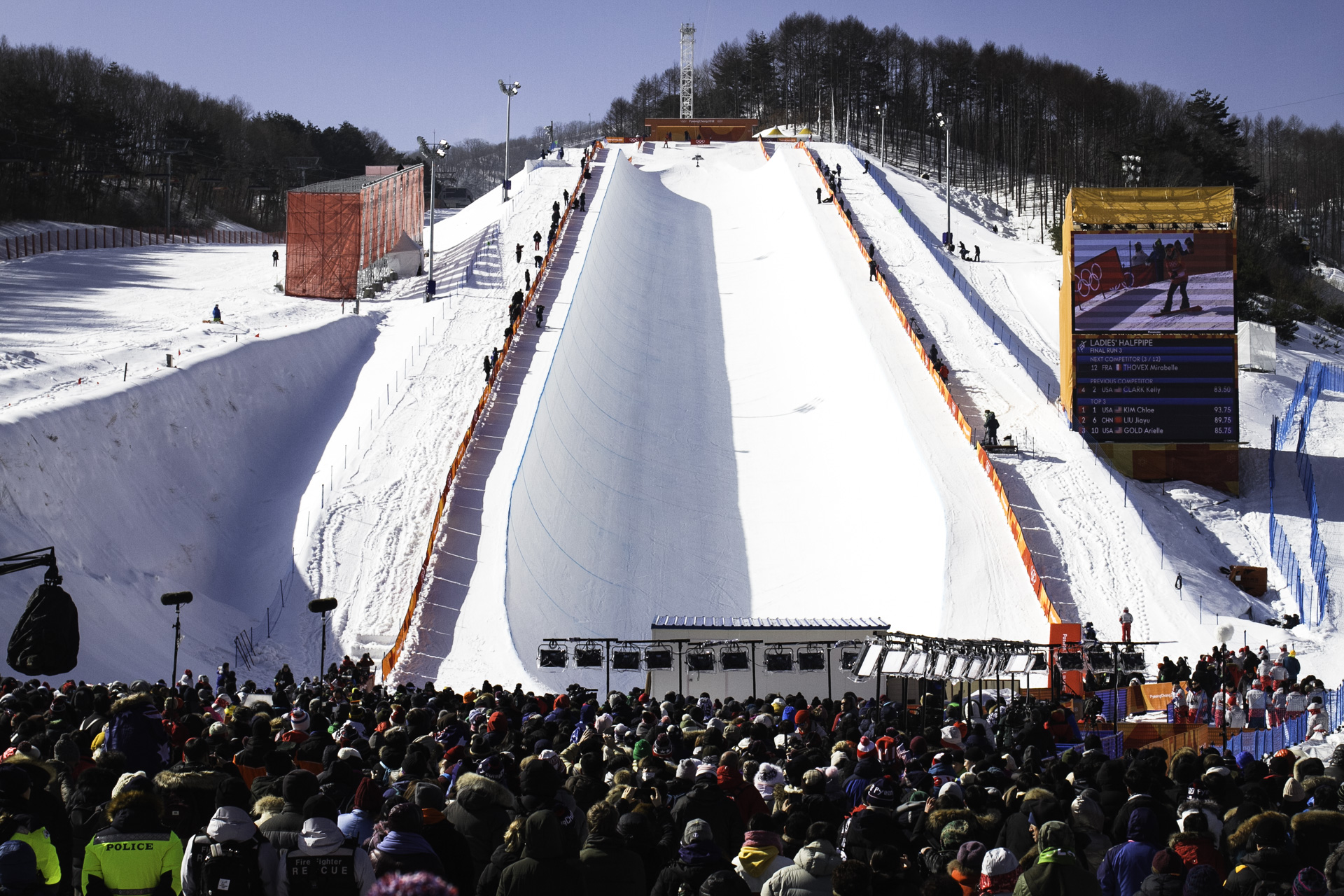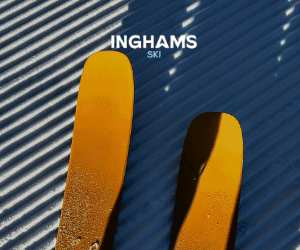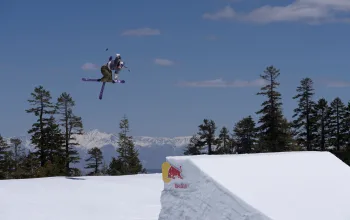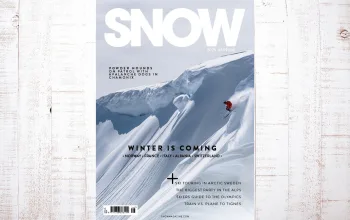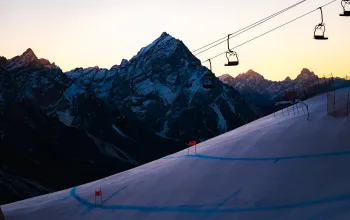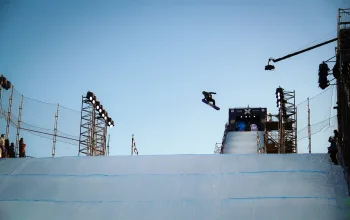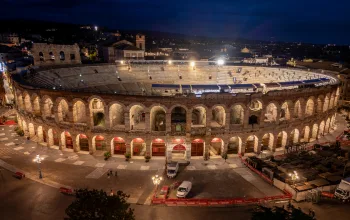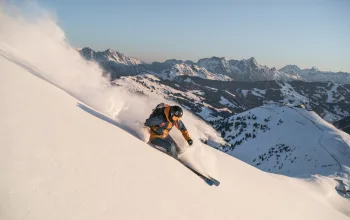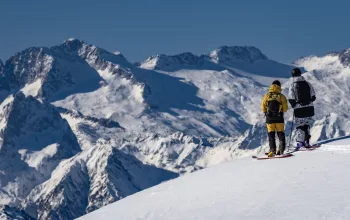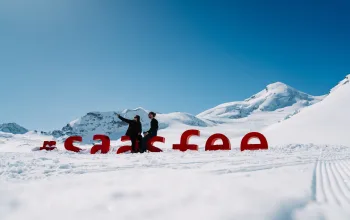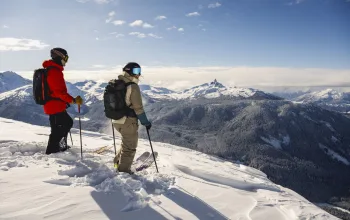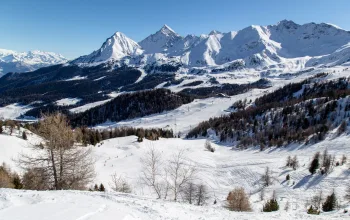Halfpipe was the first freestyle event to be introduced at the Winter Olympics, with the arrival of snowboard halfpipe at Nagano 1998, and it's still seen as the blue riband event of the games, at least for snowboarders. (Freeski halfpipe arrived later, at the Sochi 2014 Games.)
Unlike slopestyle, where the tricks are spread out down a course the length of a course, all the action in halfpipe is compressed into a small space. At many events (although not usually, at the Winter Olympics) spectators are allowed to crowd around the sides of the pipe, creating a cauldron-like atmosphere.
"Halfpipe's status was cemented by the fact that competitive snowboarding's biggest star, Shaun White, was a pipe specialist"
Halfpipe's status was cemented in the early 2000s by the fact that competitive snowboarding's biggest star, Shaun White, was a pipe specialist. On the women's side, his fellow American Chloe Kim, is currently enjoying a period as dominant as White in his pomp. Her quest for a third Olympic gold medal at Milano Cortina is guaranteed to be one of the stories of the Games, keeping the sport in the spotlight.
From the course, to the rules, to the judging criteria here's everything you need to know about snowboard and freeski halfpipe at the Milano Cortina Winter Olympics.
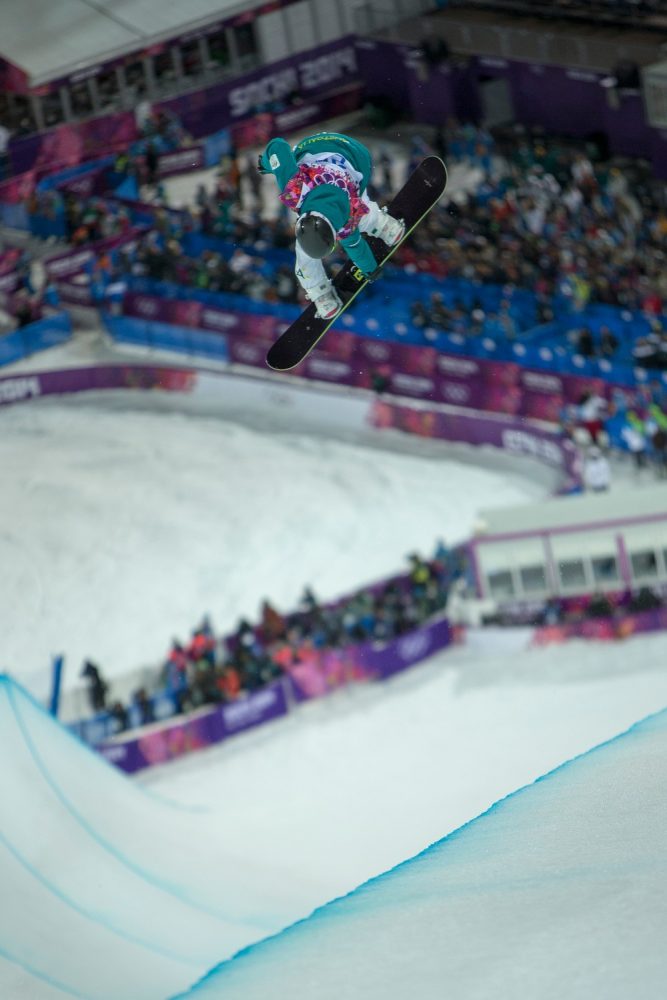
What is the History of Snowboard & Freeski Halfpipe?
Halfpipes—U-shaped ramps that look like a giant pipe, cut in half—developed from skateboarding. The first halfpipe was built was back in California in the early 1970s. Skater Tom Stewart wanted to recreate the experience of riding on water pipes in the central Arizona desert in a more convenient location. He spoke to this brother Mike, who was an architect, and the rest if history.
Halfpipes started popping up in US ski resorts in the middle of the 1980s, as pioneering snowboarders sought to replicate skateboard tricks on snow. By the middle of the decade, most snowboard contests had a halfpipe-based freestyle element, alongside a racing element inspired by slalom skiing. But pipes back then were shaped by hand—cut out of the snow by groups of snowboarders working with shovels. They tended to be rough to ride, and were hard to maintain before the invention of the halfpipe grooming machine.
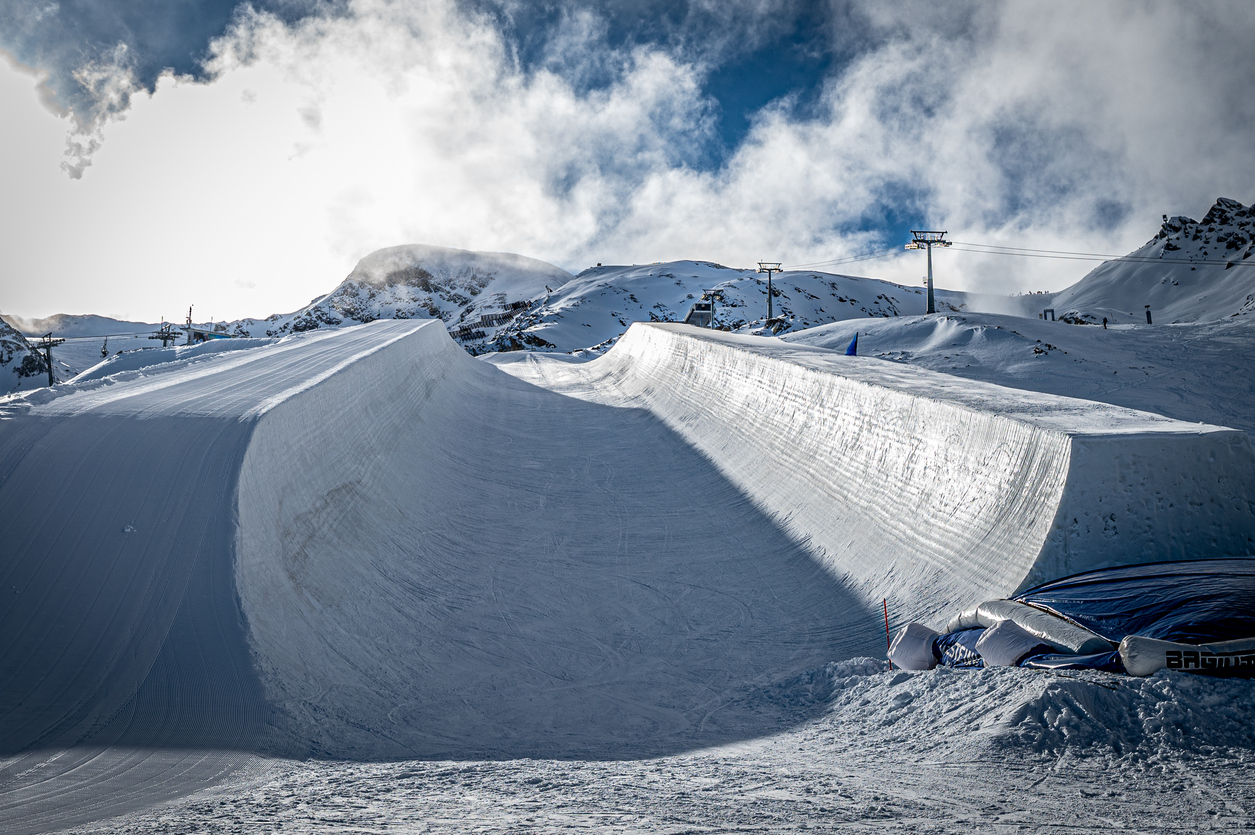
A farmer called Doug Waugh created the "Pipe Dragon" in the 1990s to solve that problem, and his machine would be innovative in the future of the halfpipe on snow. It was basically a huge bit of farming equipment that cut huge pipes out of even bigger piles of snow. Now that it was possible to maintain a quality halfpipe, a lot more ski and snowboard resorts started building them.
The popularity of halfpipe skiing and snowboarding has waned in recent years—partly because of the growth of other, more accessible, forms of freestyle, including slopestyle. But also partly because halfpipes—particularly the 22 foot (6.7m high) "superpipes" that are standard for today's competitions—are expensive to maintain.
But while ordinary skiers and snowboarders might not come across them that often, all of us will be watching the pipe come the Milano Cortina Games.
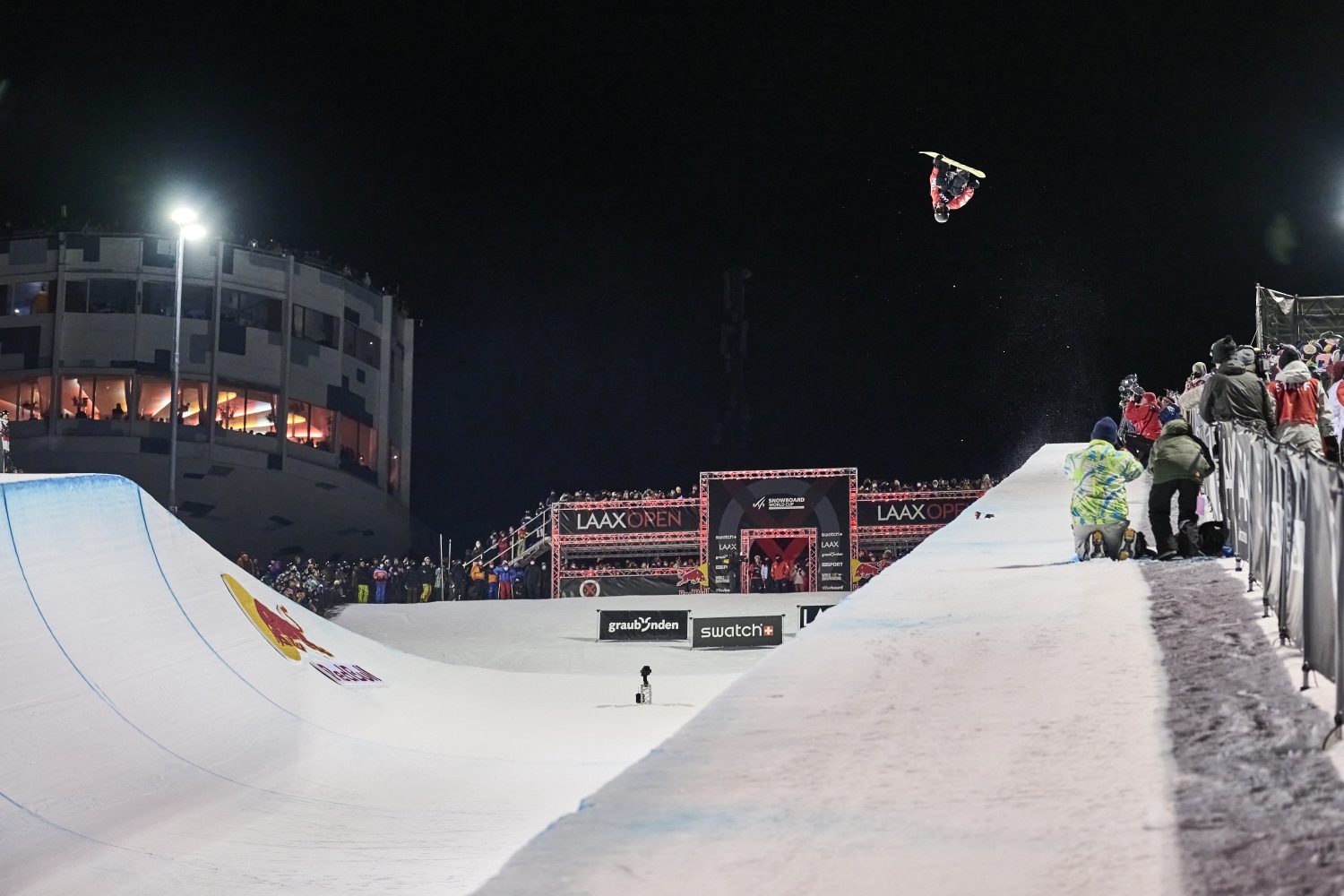
What are the Rules and Judging Criteria of Freeski & Snowboard Halfpipe?
Each athlete drops into the halfpipe individually and completes a run down the length of the pipe, doing as many jumps and tricks as he or she can manage. At the elite level, skiers and snowboarders usually five or six hits before they run out of pipe. Whoever comes out the pipe at the bottom with the best score, wins.
The scores are decided by a panel of judges, who award each rider an overall impression score for each run, based on a range of criteria laid out below. Each athlete gets two or three runs and their best score counts. In the Olympics, riders get two runs each in the qualifying stage, and three in the final.
As in ski and snowboard Big Air (another Winter Olympic event) judging criteria are best remembered using the acronym: DAVE - P.
Difficulty
This measures how technically demanding each rider’s run is. In the halfpipe, this depends on the complexity of the tricks performed on both walls—more spins, flips, and corks generally mean higher difficulty, and thus higher potential scores. But difficulty isn’t just about spinning faster or going bigger: riders can add layers of challenge in other ways.
Launching or landing switch (backwards) increases the technical rating. For snowboarders, that means taking off or landing with their unnatural foot forward; for skiers, it means skiing backward into or out of the wall. Certain directions are harder than others—switch backside spins remain among the toughest for snowboarders.
Incorporating a grab—holding the board or skis during the rotation—also adds difficulty. Some grabs (like nose or tail grabs, or those that require crossing arms) are considered more technical than simpler ones.
Amplitude
Amplitude is all about height and power—how high the rider rises above the lip of the pipe. Judges reward athletes who boost impressively out of the halfpipe while still maintaining control and landing smoothly back in the transition.
Riders who go huge but miss the ideal landing zone risk losing points in execution, as overshooting or dropping too low can throw off balance. Of course, pushing the limits of amplitude often means flirting with disaster—so even if the score doesn’t show it, the commitment certainly does.
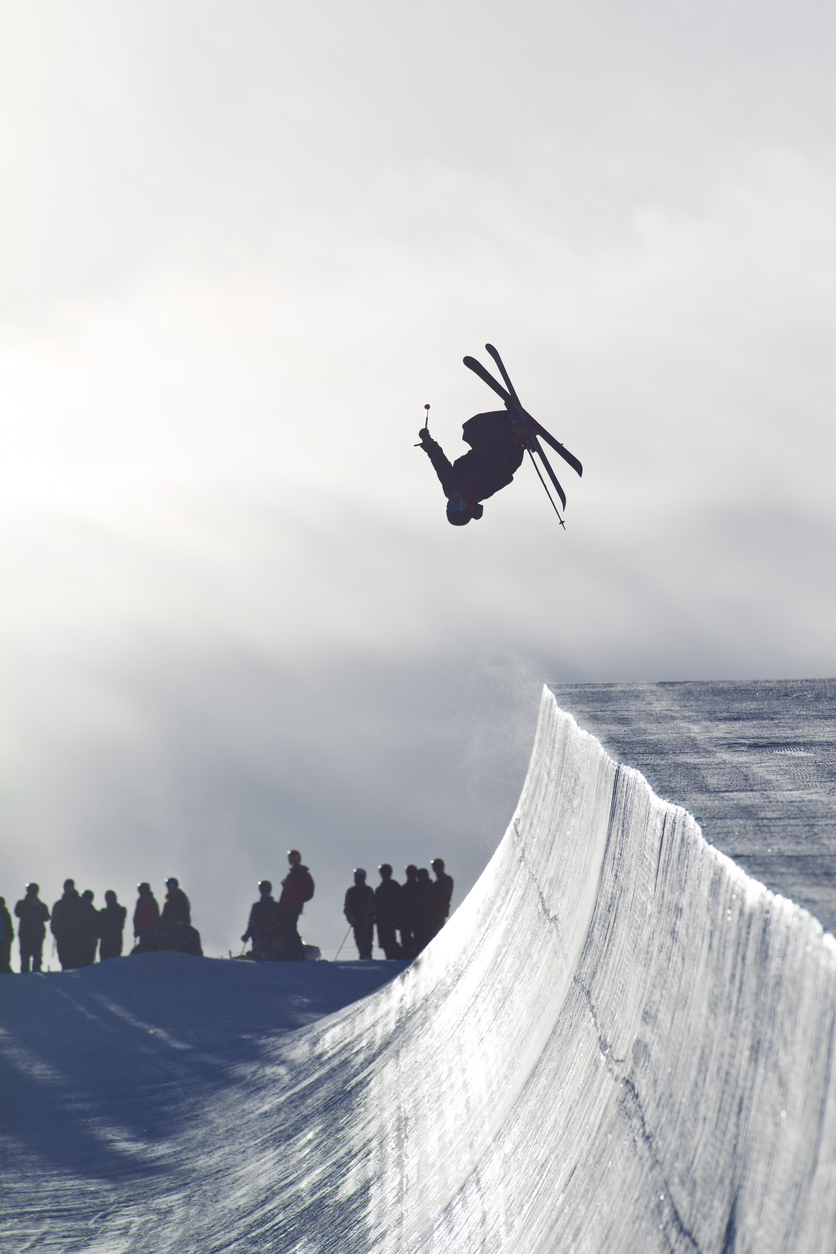
Variety
In halfpipe, riders must show a well-rounded mix of tricks rather than repeating the same spin or grab each hit. Judges look for runs that include rotations in both directions (frontside and backside for snowboarders; left and right spins for skiers), different grabs, and switch variations.
A balanced run that uses both walls creatively—changing up trick types, axes, and approaches—demonstrates mastery of the full pipe, not just one favourite wall or direction.
Execution
Execution is where style and precision come into play. A clean run means smooth takeoffs, steady body control in the air, and solid, stomped landings. Arms shouldn’t flail; movements should look effortless. Grabs need to be held clearly and with intention, and tweaks or pokes—where a rider pushes out a leg or contorts the grab—show extra control and confidence.
Minor hand drags on landing aren’t automatically penalised if they don’t disrupt the flow, but a revert (changing stance because a rotation wasn’t completed cleanly) will cost valuable points and can count nearly as harshly as a fall.
Progression
Judges also reward innovation—anything that pushes the boundaries of what’s been done before in the halfpipe. New trick combinations, creative grabs, unusual spin directions, or unique transitions can all demonstrate progression.
As the FIS Judging Handbook notes, originality, risk, and creativity deserve recognition. In short, if a rider brings something fresh to the pipe—something new, rare, or surprising—it should be rewarded accordingly.
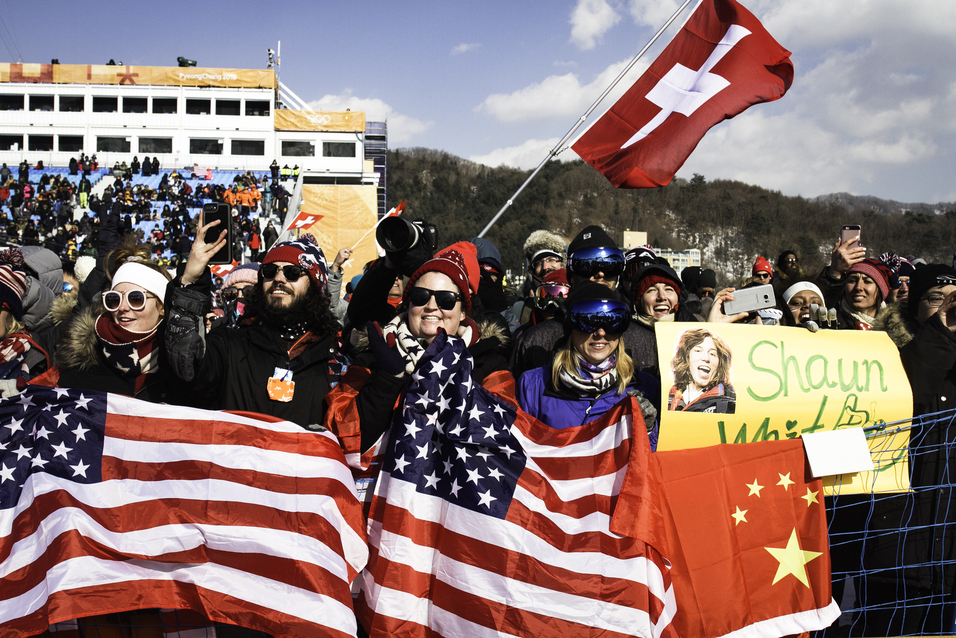
Who are the Olympic Halfpipe Judges?
The rules state that the judging panel has to be made up of at least six individuals each from different nations. Sometimes, there are up to nine judges in total on the panel. One of these is the head judge, who doesn't score directly himself—he's responsible for collecting the scores and ensuring the smooth running of the panel. At the time of writing, the idenities of these individuals hadn't been confirmed, but all will be super experienced judges who've officiated at multiple FIS and X Games contests previously.
Each run is scored on the basis of overall impression, out of 100, with the panel basing their scores on the five judging criteria listed above. The highest score and the lowest score are not considered, so that any outliers that might skew the averages are eliminated. This also helps reduce the chance of national biases affecting the score.
The final score you see on your TV screens is the average of the remaining judge's marks, once those highest and lowest scores have been removed.
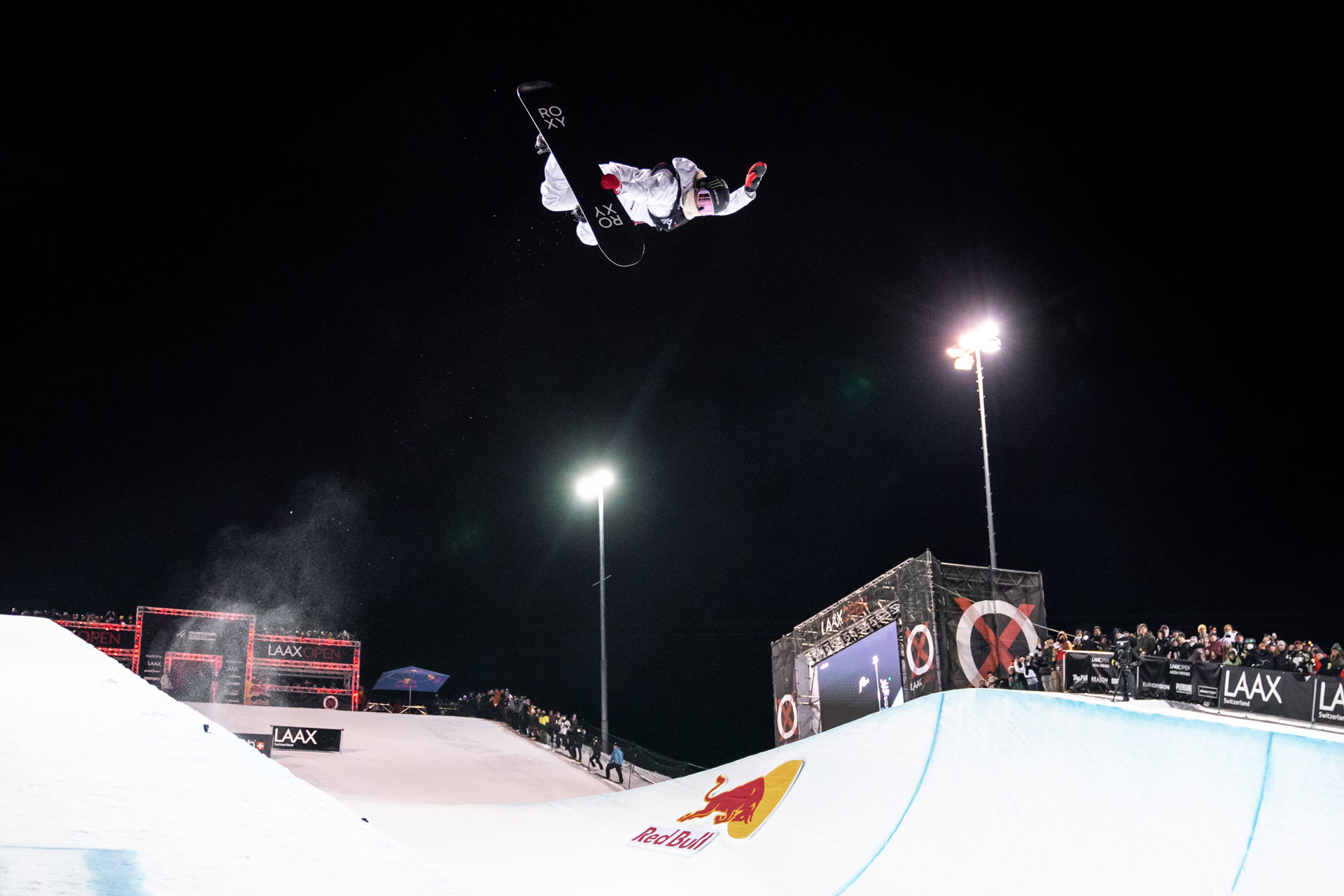
What tricks are likely to win the Olympic Halfpipe?
Halfpipe requires such precision that athletes practise their sequence of tricks over and over again. Most skiers and snowboarders will have a "safety run"— a sequence that they feel they can nail consistently—which they'll do on Run Number 1. Once they've landed that, they'll try and step it up for Runs Number 2 & 3.
Combos or particularly difficult tricks back to back tend to score particularly high. And more so than slopestyle, amplitude is particularly important. At the last Olympics, Japanese rider Ayumu Hirano won the gold medal with a run that included a triple cork 1440 — a trick only he had landed in competition, which consists of three flips and four complete 360 degree spins. In the run up to Milano Cortina, several other riders have the trick nailed, so you can expect in to feature in the winning run.
"At the last Olympics, Ayumu Hirano won the gold medal with a run that included a triple cork 1440 — a trick only he had landed in competition"
In men's ski halfpipe, elite athletes are currently doing back to back double cork spins with up to 1620 degrees of rotation. Triple corks have been landed by skiers in the pipe, but do not feature in competition regularly. Although, skiers often keep their best tricks under wraps for the games, so watch this space.
In women's snowboard halfpipe, Chloe Kim has recently begun throwing double cork 1080s into her runs, so you can expect that trick to feature. The leading women's halfpipe skier of the past few years has been Eileen Gu, whose runs in Beijing included a back-to-back 900 combo. You can expect several other skiers—including Team GB's Zoe Atkin, the current World Champion—to have similar combos up their sleeves.
Zoe is the UK's best hope in the pipe—check out our full list of Team GB medal contenders in skiing and snowboarding for more info. For a full glossary of useful trick terminology, check out our guide to Big Air at the Winter Olympics.
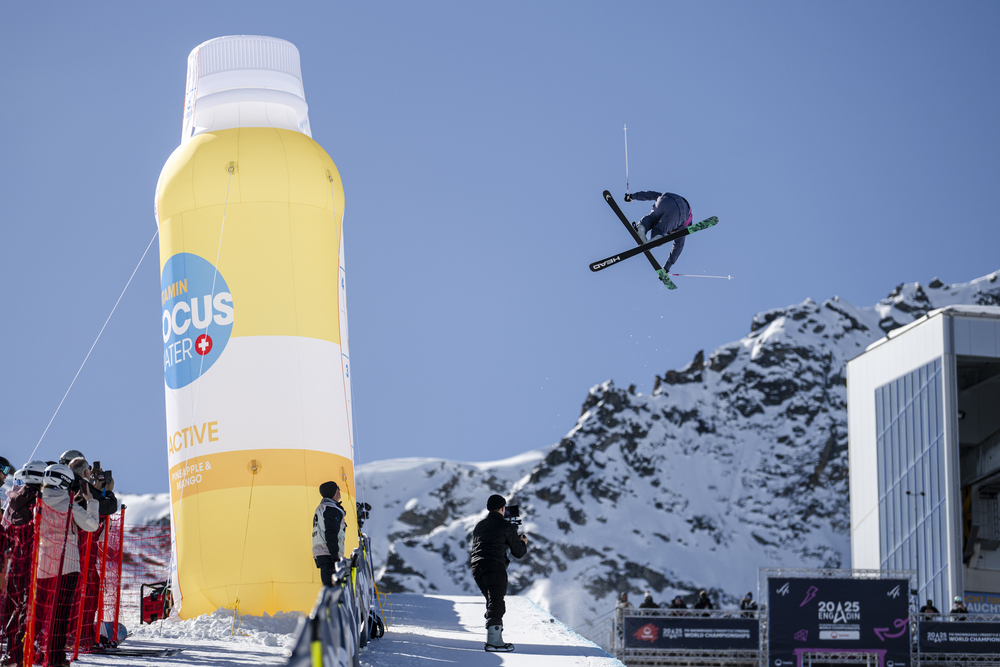
When and where are the Olympic Freeski and Snowboard Halfpipe Events at Milano Cortina?
The halfpipe events will take place at the Mottolino Snow park in Livigno—check out our full guide to the Milano Cortina Winter Olympic venues for more info. For info on how you can watch Winter Olympic ski and snowboarding events live in the UK, check out our guide to streaming Milano Cortina here.
The halfpipe event times are as follows (these are UK times, for local time in Italy add one hour):
Freeski Halfpipe
Thursday 19th February, 09:30-11:30: Men's freeski halfpipe qualification
Thursday 19th February, 18:30-20:30: Women's freeski halfpipe qualification
Friday 20th February, 18:30-20:30: Men's freeski halfpipe final
Saturday 21st February, 18:30-20:30: Women's freeski halfpipe final
Snowboard Halfpipe
Wednesday 11th February, 9:30-11:45 Women's snowboard halfpipe qualification
Wednesday 11th February, 18:30-20:45 Men's snowboard halfpipe qualification
Thursday 12th February, 18:30-20:20: Women's snowboard halfpipe final
Friday 13th February, 18:30-20:20: Men's snowboard halfpipe final
A version of this article originally appeared on Mpora.com, and it's published here under license.



